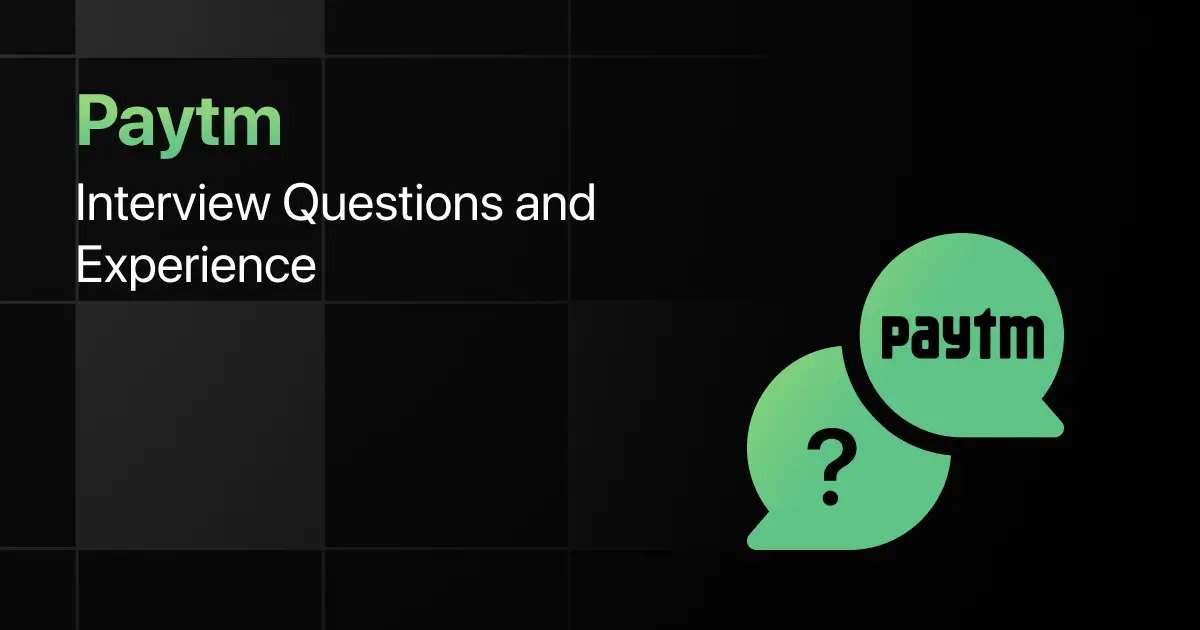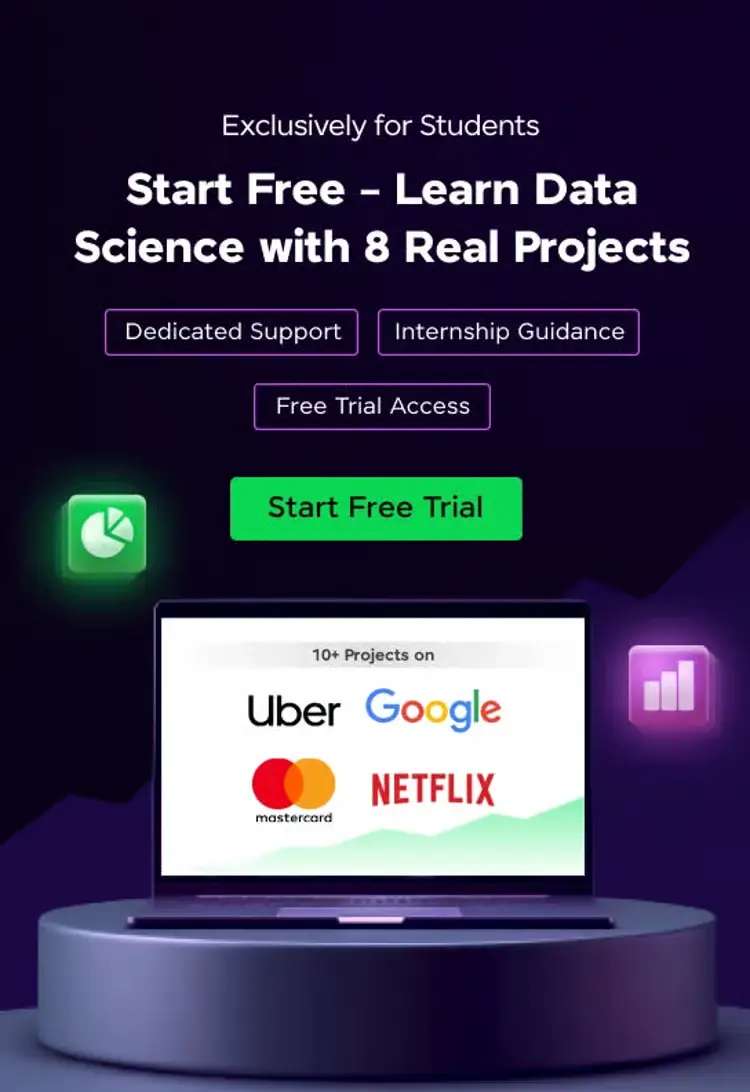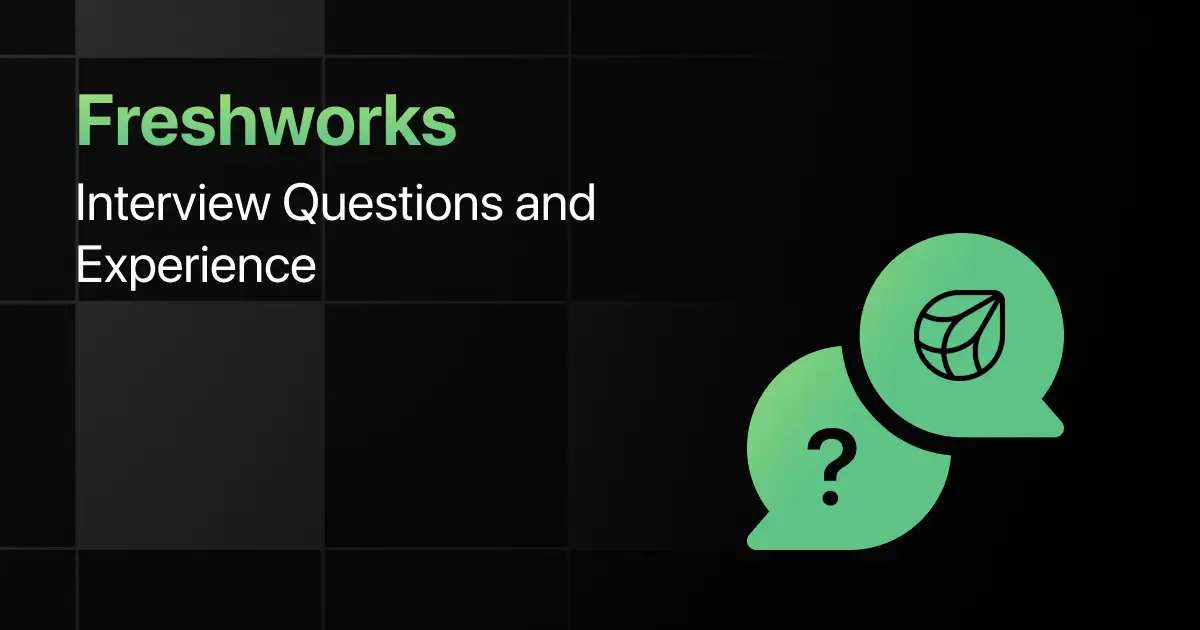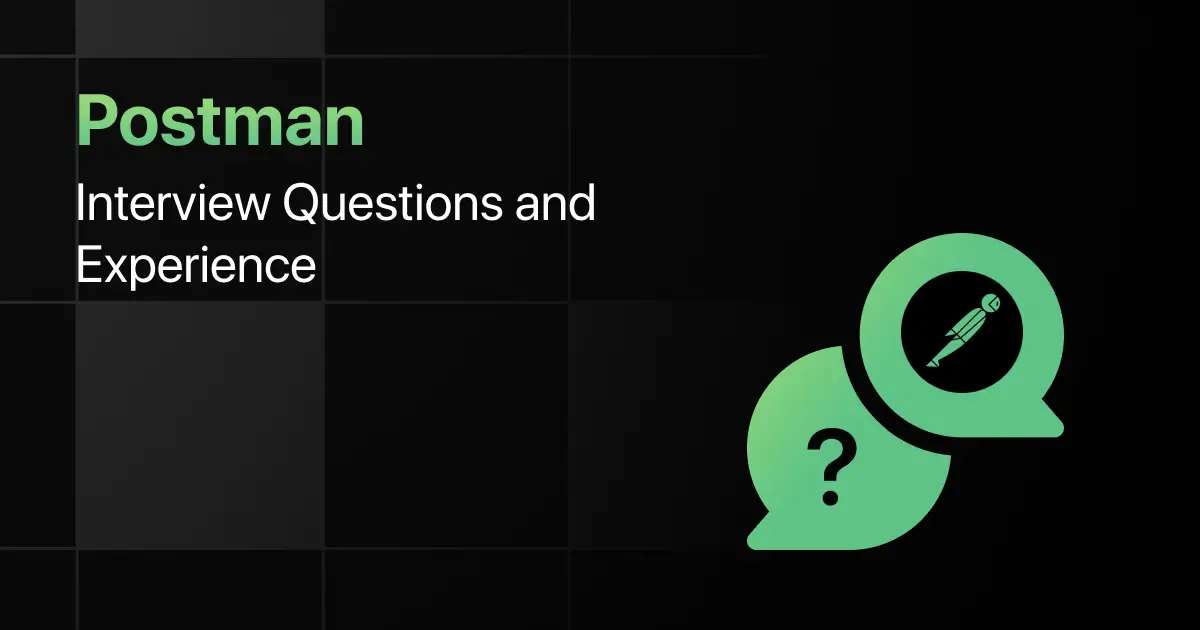Amazon Interview Questions and Experience

Have you ever wondered what it takes to clear an Amazon interview? Many candidates prepare for months, yet the process still feels unpredictable.
Amazon interviews often test not just technical knowledge but also problem-solving, communication, and alignment with company values. For freshers and experienced alike, the challenge can be intense.
In this blog, you will find Amazon’s hiring process, common interview questions, real candidate experiences, and preparation tips to help you approach your interview with confidence.
Amazon Hiring Process – Overview
Here’s a quick overview of Amazon’s hiring process:
| Category | Details |
|---|---|
| Eligibility | Both freshers and experienced candidates. Preferred degrees: B.E./B.Tech, B.S., computer science, software engineering, related fields. |
| Rounds | Typically 5–6 rounds: resume/application → online assessment/tests → phone screen → interview loop (technical + behavioral) → hiring manager & HR rounds. |
| Job Roles Offered | Software Development Engineer (SDE), Data Engineer, Business Analyst, Operations Manager, Quality Assurance, Product Manager, and others. |
| Salary Range | Freshers (SDE-1): ~ ₹25-30 LPA (base + bonus/stock) in India. Experienced (SDE-2 / Senior): ₹45-60+ LPA depending on level. (Glassdoor, AmbitionBox) |
| Apply Link | Apply Now |
Top Amazon Interview Questions
Amazon interviews test your coding ability, problem-solving skills, and knowledge of core computer science fundamentals. Below are some common technical questions with answers.
1. Technical Questions
- Explain the difference between Array and Linked List.
An array has fixed size and allows random access in O(1). A linked list is dynamic and allows faster insertions/deletions but slower access. - What is the difference between Stack and Queue?
A stack uses LIFO (Last In First Out) while a queue uses FIFO (First In First Out). Both are linear data structures with different access orders. - How do you detect a cycle in a linked list?
Use Floyd’s Cycle Detection Algorithm (two pointers, slow and fast). If they meet, a cycle exists. - Write a program to reverse a string.
Iterate from end to start or use two-pointer swapping. In Java: new StringBuilder(str).reverse().toString(). - Explain HashMap in Java.
HashMap stores key-value pairs using hashing. Average complexity is O(1) for put/get operations, though collisions may degrade performance. - How do you implement a queue using two stacks?
Use one stack for enqueue, another for dequeue. When dequeueing, transfer elements if needed. This ensures FIFO behavior. - Explain Binary Search and its complexity.
Binary Search repeatedly divides a sorted array to find an element. Time complexity is O(log n). - What is a Deadlock in operating systems?
Deadlock occurs when processes wait indefinitely for resources locked by each other. Four conditions: mutual exclusion, hold & wait, no preemption, circular wait. - Difference between SQL INNER JOIN and LEFT JOIN.
INNER JOIN returns matching records from both tables. LEFT JOIN returns all records from left table and matched records from right table. - What is the time complexity of QuickSort?
Average case O(n log n). Worst case O(n²) when the pivot is poorly chosen.
2. Role-Based Questions
Fresher
- What is Object-Oriented Programming (OOP) and why is it important?
OOP is a programming paradigm based on objects and classes, helping organize code for better reusability, scalability, and maintainability. - What are operating system processes and threads?
A process is an independent program in execution, while a thread is a lightweight unit of execution within a process. - Explain normalization in databases.
Normalization is the process of organizing data into smaller, related tables to reduce redundancy and improve consistency. - Tell me about a time you worked in a team to solve a problem.
In my final year project, our team faced an issue with API integration; I coordinated with a teammate to debug, divided the tasks, and together we fixed the problem before the deadline. (Explain using the STAR method, showing teamwork, ownership, and how your actions helped achieve the result.)
Developer
- What is the difference between Amazon S3 and EBS?
S3 is an object storage service for unstructured data, while EBS is block storage attached to EC2 instances for persistent volumes. - How would you design a scalable login system for millions of users?
Use load balancers, session management, caching, and database sharding with encryption and failover for reliability. - Explain how you would optimize a slow SQL query.
By creating proper indexes, avoiding unnecessary joins, and analyzing query execution plans. - What is the difference between REST and SOAP APIs?
REST is lightweight and uses JSON over HTTP, while SOAP is protocol-based and uses XML with strict standards.
Analyst
- How do you handle missing data in a dataset?
By using deletion, mean/median imputation, or predictive models depending on the dataset’s size and importance. - What is A/B testing and why is it important?
A/B testing compares two versions of a feature to measure impact, helping in data-driven decisions. - How do you calculate correlation between two variables?
By using statistical methods like Pearson correlation to measure the linear relationship between them. - Explain a time when data analysis led to an impactful business decision.
For example, analyzing user drop-offs in a funnel can help optimize checkout flow, increasing conversions.
AWS
- What is Auto Scaling in AWS?
Auto Scaling automatically adjusts the number of EC2 instances to handle varying load while optimizing cost. - What is the difference between IAM roles and IAM policies?
IAM policies define permissions, while IAM roles are identities that can assume those permissions. - What is the difference between horizontal and vertical scaling?
Horizontal scaling adds more machines, while vertical scaling increases resources like CPU/RAM in a single machine. - What is the difference between Amazon RDS and DynamoDB?
RDS is a managed relational database service, while DynamoDB is a fully managed NoSQL database.
Manager
- How do you manage a team under tight deadlines?
Set priorities, delegate effectively, monitor progress, and keep communication open. Motivate the team while ensuring realistic goals. - How do you handle conflicts within your team?
Address conflicts early by listening to both sides, finding common ground, and encouraging collaboration to maintain team harmony. - How do you motivate your team during challenging projects?
By recognizing efforts, setting achievable goals, and providing support to boost morale. - How do you ensure accountability in your team?
By setting clear expectations, tracking progress with regular updates, and reviewing results fairly.
3. Behavioral Questions
- Tell me about a time when you worked in a team under pressure.
I described a project with tight deadlines. I divided tasks, communicated progress regularly, and supported teammates, ensuring the project finished successfully. - How do you handle disagreements with a colleague?
I listen to their perspective, share my reasoning, and look for a middle ground. If needed, I escalate respectfully to maintain progress. - Describe a situation where you took ownership of a project.
In my previous role, I led a feature rollout. I managed requirements, coordinated with teams, and resolved issues, delivering on time with quality. - How do you ensure clear communication in cross-functional teams?
I use simple, concise language, document requirements, and hold regular sync meetings. I also confirm understanding by summarizing key points. - Amazon values leadership principles. Which one resonates most with you and why?
Customer Obsession resonates most with me. I always consider the end user’s needs and make decisions that improve customer experience.
Amazon Interview Experiences
1. SDE-1 role Interview Experience (Fresher)
This interview experience is from M. Vineeth, who interviewed for an SDE-1 role with Amazon India through an off-campus process. The process spanned an online assessment and three interview rounds, lasting approximately five and a half months.
Candidate Background: Final year B.Tech CSE student at Bennett University. Internship at ZS Associates. Strong focus on DSA and projects.
Interview Process They Faced
- Online Assessment: 2.5 hours. Code debugging, two coding questions, workstyle assessment, reasoning ability.
- Round 1 (Technical): Project discussion. Two coding problems.
- Round 2 (Technical): Leadership questions using STAR. One hard coding problem.
- Round 3 (Bar Raiser): Resume and behavioral discussion tied to Leadership Principles. Two coding problems.
Questions Asked
- OA: One easy and one hard coding. Debug tasks. Aptitude and workstyle.
Round 1:
- Find K Closest Elements in sorted array. Approach: binary search then two pointers.
- Rotting Oranges. Approach: BFS with queue.
Round 2:
- Word Search II variant. Required counting occurrences in grid. Discussed brute force and optimal.
Bar Raiser:
- Design a circular queue with fixed size. Implement functions and handle edge cases.
- Lowest Common Ancestor in a BST. Explain recursion flow and stack behavior.
Outcome & Difficulty Level: Selected as SDE-1. Difficulty: Moderate to Hard. Clear explanations, clean code, and dry runs were important.
2. SDE-1 role Interview Experience (Experienced)
This interview experience is from Shiwangi Kumari, who interviewed for an SDE-1 role with Amazon while working at a startup. The process included an online assessment and four interviews across two days.
Candidate Background: Software Engineer with industry experience. Tech stack across backend and systems. Applied through Amazon Careers under University Talent Acquisition.
Interview Process They Faced
- Online Assessment: One easy and one medium DSA problem. Work simulation modules. Behavioral MCQs.
- Round 1 (DSA): Single graph problem. Full coding with I/O handling.
- Round 2 (DSA): Maps and hashing based problem.
- Round 3 (System Design): Design a bookstore and count occurrences of a word in a given book. Discussed classes, methods, and data flow. Project deep dive.
- Round 4 (Mixed): Work deep dive for 40 minutes. Medium sliding window problem.
Questions Asked
OA: DSA coding. Work simulation on decision making and customer issues. Behavioral MCQs.
- Round 1: Currency converter graph problem. Choice of data structure and parsing.
- Round 2: Hash map based problem.
- Round 3:Bookstore design. Class design and search strategy. Project impact and approach.
- Round 4: Sliding window medium problem. Role and architecture discussion.
Outcome & Difficulty Level: Selected as SDE-1 after later HR confirmation. Difficulty: Moderate. Expect depth in DSA, clear design thinking, and detailed project discussions.
Preparation Tips for Amazon Interviews
A structured approach across technical, role-based, and behavioral preparation can make Amazon interviews easier to navigate.
- Master DSA: Focus on data structures and algorithms. Practice coding problems regularly and understand time and space complexities.
- Practice Coding: Solve problems on platforms like LeetCode or HackerRank. Focus on both optimal solutions and clear explanations.
- Revise AWS Basics: Be familiar with services like EC2, S3, IAM, and Auto Scaling. AWS knowledge is often tested for technical and DevOps roles.
- Know Leadership Principles: Amazon values its leadership principles. Prepare real examples from your experience that demonstrate ownership, customer obsession, and teamwork.
- Work on Projects: Be ready to explain your projects clearly. Highlight technical challenges, design choices, and business impact.
- Prepare for Behavioral Questions: Use the STAR method (Situation, Task, Action, Result) to give structured and concise answers.
- Simulate Interviews: Take mock interviews with peers or online platforms. This helps improve confidence and time management.
Final Words
Amazon interviews are designed to test both technical expertise and cultural alignment. By practicing coding, revising AWS concepts, and preparing behavioral examples, you can approach the process with confidence.
Explore More for
- Salesforce
- Oracle
- Microsoft
- IBM
- Adobe
- Flipkart
- Apple
- Uber
- Meesho
- Zomato
- Swiggy
- Phonepe
- Zoho
- Postman
- Freshworks
- Paytm
- Darwinbox
FAQs
Amazon interview questions usually cover data structures, algorithms, AWS concepts, system design, and behavioral questions based on leadership principles.
Yes, Amazon interview questions are challenging for freshers, but consistent practice in DSA and projects can make them manageable.
The Amazon interview process usually takes three to six weeks depending on the role and location.
Candidates should focus on coding, data structures, algorithms, AWS basics, and problem-solving skills.
Common mistakes include not explaining the thought process, ignoring leadership principles, weak coding fundamentals, and poor preparation for behavioral questions.
There are usually five to six rounds, including online assessments, technical rounds, behavioral rounds, and HR discussions.
Yes, freshers are tested more on basics and DSA, while experienced candidates face system design and project-related questions.
The best way to prepare is by practicing coding, revising concepts, and using resources on PlacementPreparation.io for guidance.
Related Posts


Paytm Interview Questions and Experience
Preparing for a Paytm interview requires a clear understanding of the company’s hiring process, the type of questions asked, and …
Warning: Undefined variable $post_id in /var/www/wordpress/wp-content/themes/placementpreparation/template-parts/popup-zenlite.php on line 1050








